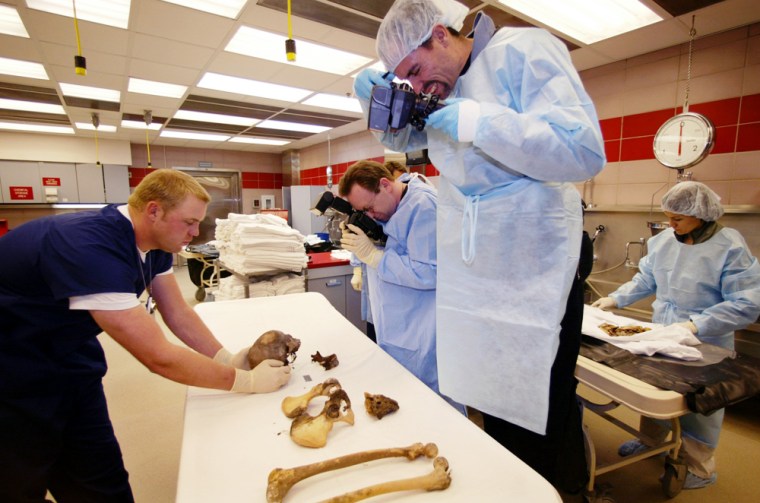When her baby brother vanished the last time, Linda Foster was concerned but not frantic. Gary had gone missing before. Perhaps he was off again struggling with his inner demons.
This time, though, Gary never came back.
Two years went by before Foster found out that Gary had been struck by a car. And she learned only then because an enterprising new coroner had decided to post photographs of unidentified corpses on the Internet.
When Mike Murphy took over the Clark County coroner’s office in May 2003, he knew he would have to be creative about handling its responsibilities. It handles more than 3,000 cases and performs some 1,300 autopsies a year.
“Our resources are very, very limited. Just like everybody else’s in government. So we’re trying to figure out how to do more with less,” Murphy said.
'Commonsense to me'
With that, Murphy decided to try something that apparently had not been done before. The office began compiling digital photographs of the county’s unidentified dead and posting them on the Internet. Among them Gary — John “White” Doe found March 2, 2002, lying in the middle of a boulevard north of Las Vegas— and 168 other John and Jane Does.
“While this is certainly outside of the traditional norms, it made commonsense to me,” Murphy said.
In early November, the coroner’s office set up a Web page with some 35 photos. An article ran the same day in a local newspaper, read by Sgt. John Gierczic, who works at the city jail.
Gierczic checked out the site and recognized one of the photos. It was of John “White” Doe.
“I knew his first name was Gary,” Gierczic said, but it took awhile to figure out the last name — Kavanaugh.
When Gierczic did, he sent an e-mail to the coroner’s office, and the mystery of John “White” Doe was solved. Since then, one other person has been identified through the site.
“We had actually talked about the idea that if we only identify one person off the site, we were happy,” Murphy said. “And, here the first day we identified someone.”
Software helps with death
The office has taken steps to ensure the photos are not gruesome. A software program allows wounds to be covered and stitches blurred, Murphy said. No decomposing skin is shown.
“Our goal was to identify people in a respectful, dignified and appropriate way,” Murphy said.
Most other coroner’s and medical examiner’s offices hire artists to draw black-and-white sketches of their unidentified dead, and many post the drawings on the Internet.
Michigan State Police, for example, use a combination of sketches and clay models to provide images for its Web site.
Sgt. Mark Krebs, one of a handful of artists on the Michigan staff, said he doesn’t object to Murphy’s plan as long as it’s done “with taste and reverence.”
Still, many who work to identify the dead are in no rush to copy the program.
“Whatever works is good, but we don’t want to put on a display for some of the people who enjoy seeing dead bodies,” said Rick Bogan, senior deputy coroner with the Riverside County, Calif., coroner’s office.
Murphy said he posted several disclaimers, and a person must navigate through several screens before reaching the photographs.
“If you’re offended by it, you’re only going to go there if you need it,” Murphy said.
Todd Matthews of the Internet-based Doe Network, an international volunteer organization devoted to solving unidentified cases, said the Clark County site has brought publicity to missing cases.
“I don’t think they have done anything wrong,” Matthews said. “There are far more shocking images on the Internet.”
Worth the price?
Doe Network’s site posts hundreds of sketches and clay models of the unidentified. Matthews said the mission is the same regardless of what method is used.
“Some people may take pleasure from this,” Matthew said. “If that’s the price we have to pay, let ’em. The right person has to see this.”
Foster said she was grateful for the photo of her brother, though it brought mixed feelings because Gary’s life wasn’t a happy one.
“I wouldn’t even want to think about never knowing what happened to him,” said Foster, who lives in Niagara Falls, N.Y. “It’s a horrible feeling when you don’t know where they are.”
The site’s success outweighs any criticism or ethical questions about posting photographs of the dead, Murphy said.
“I asked myself the question, ’Are we doing the right thing for the right reasons?”’ he said. “And my answer was yes.”
The Clark County coroner’s Web site is www.accessclarkcounty.com/coroner/index.html.
